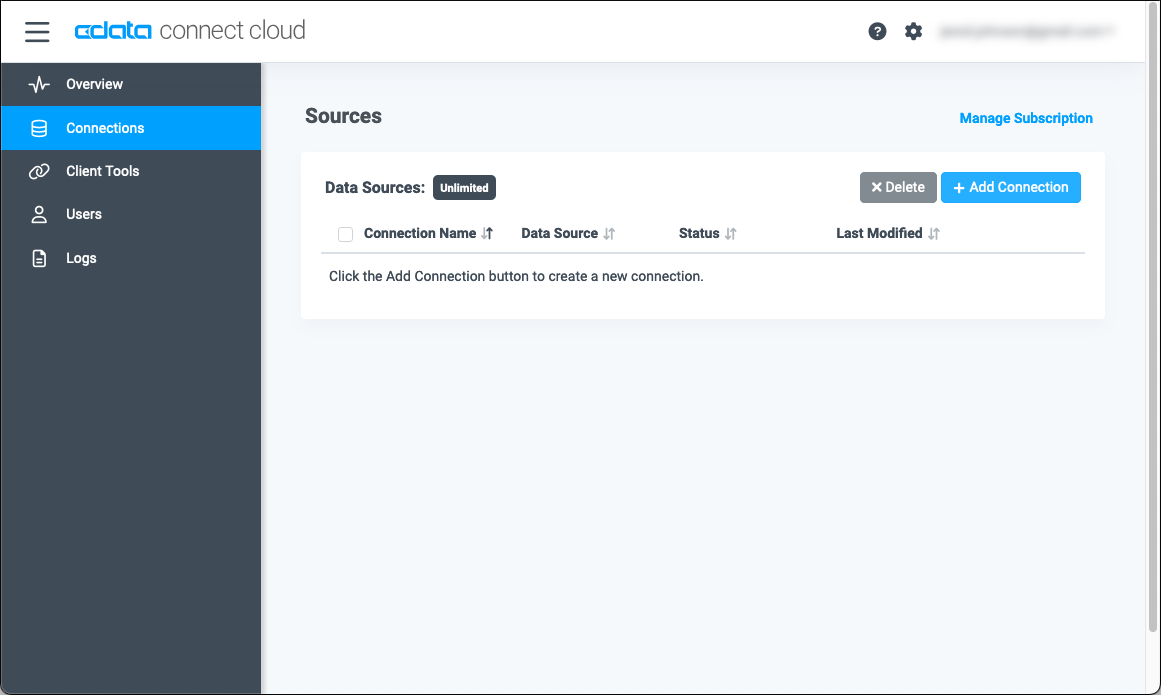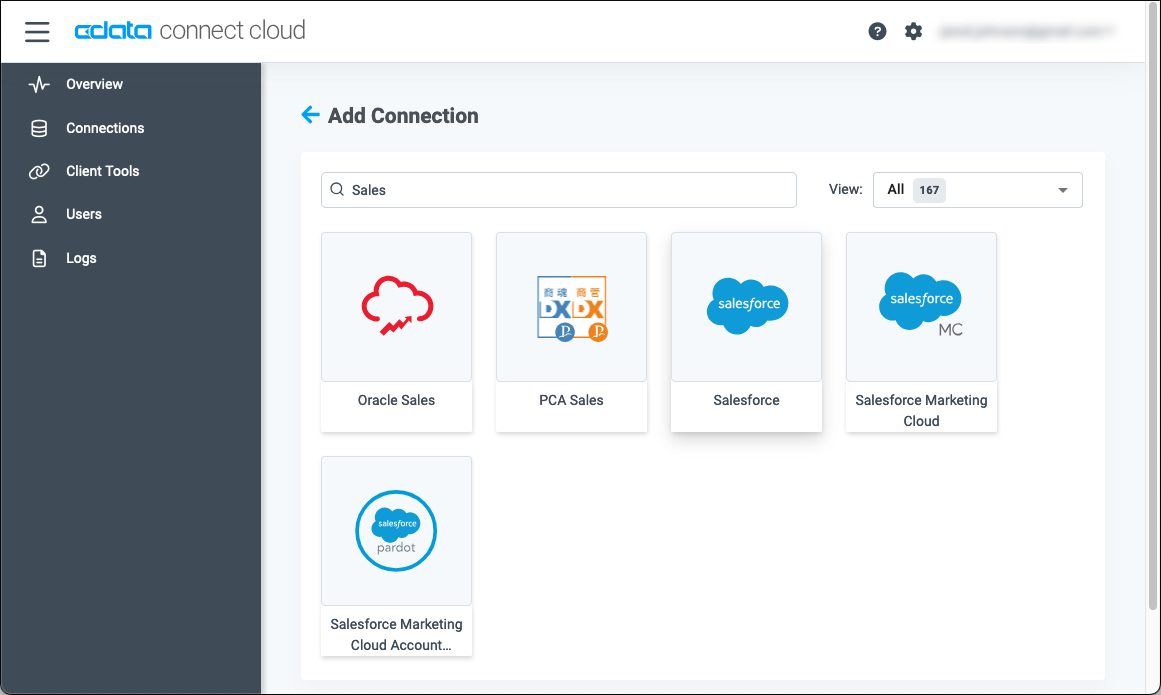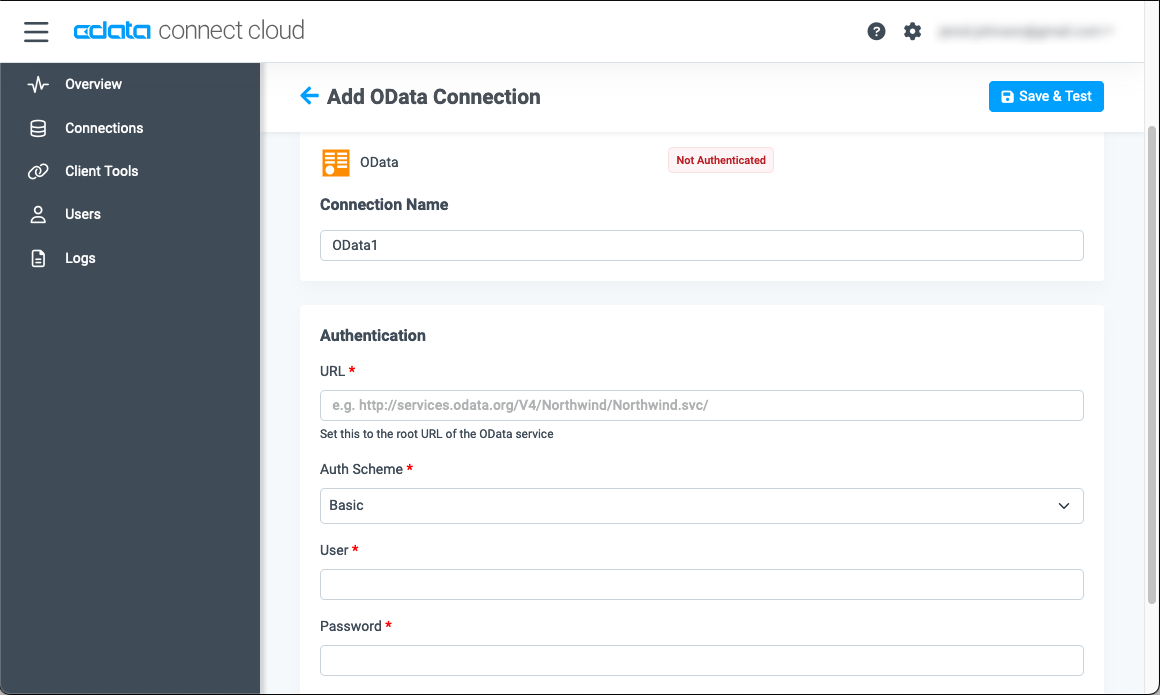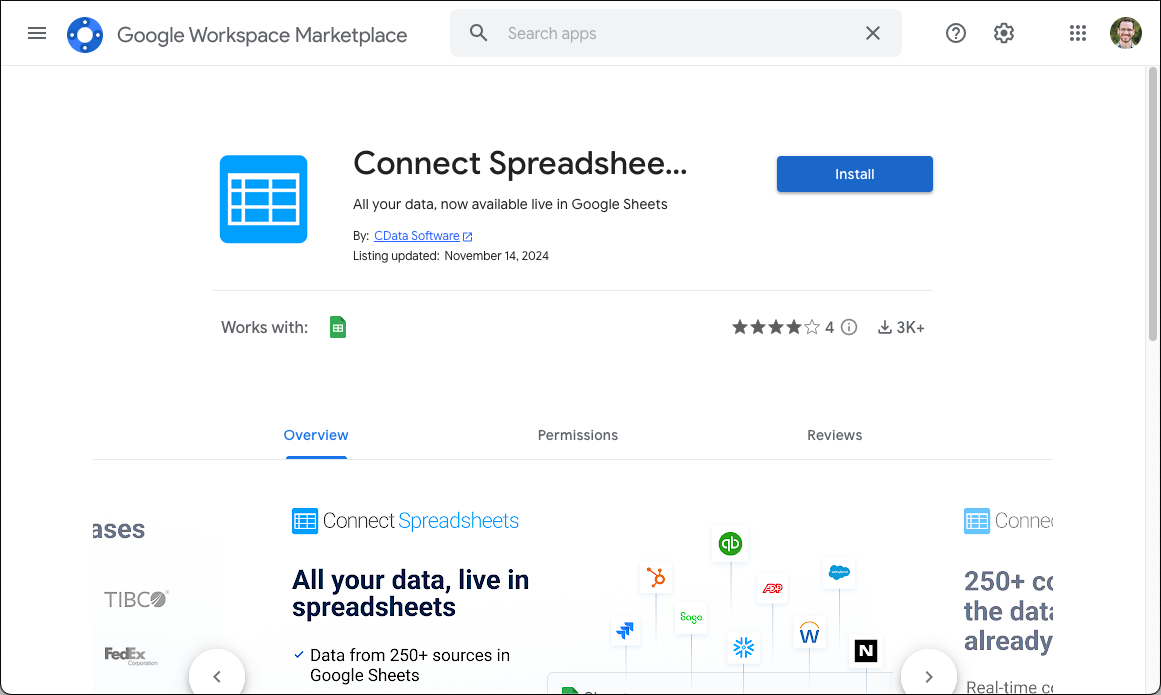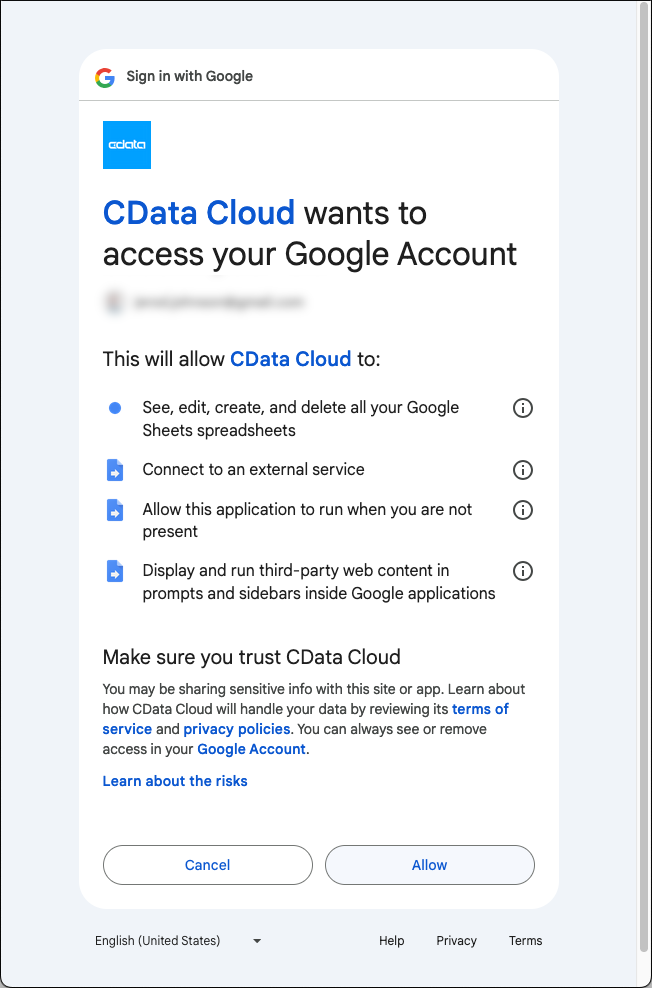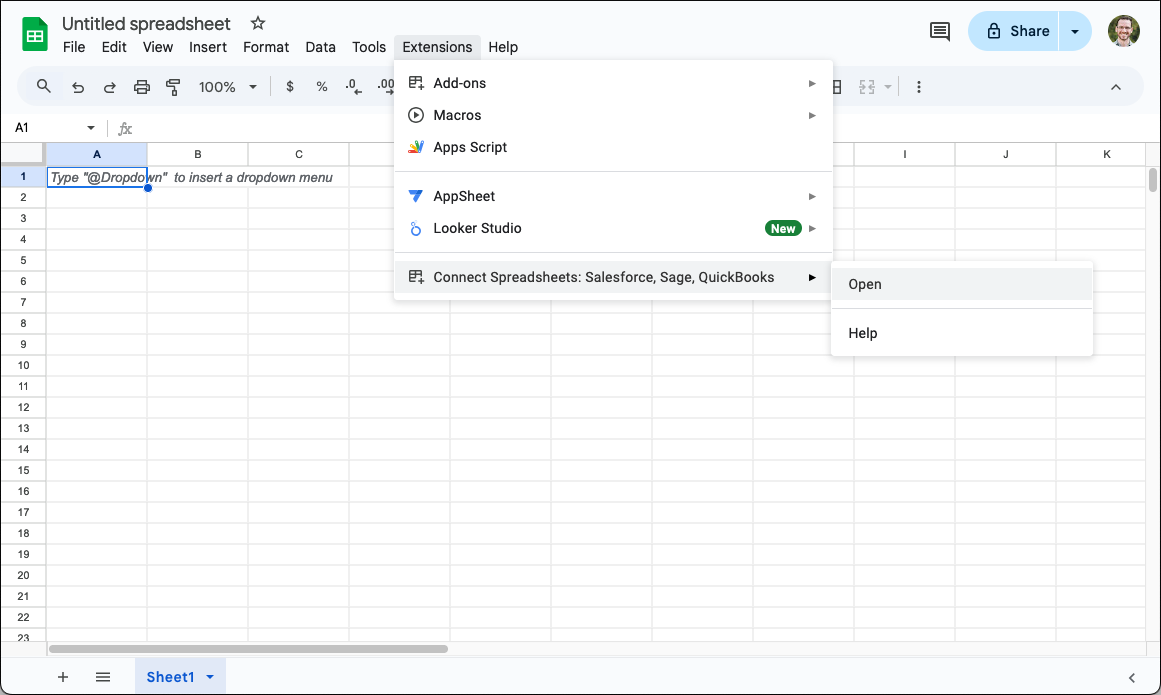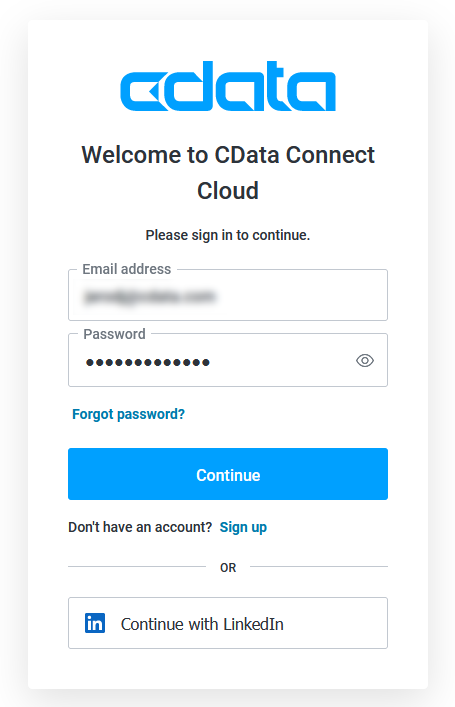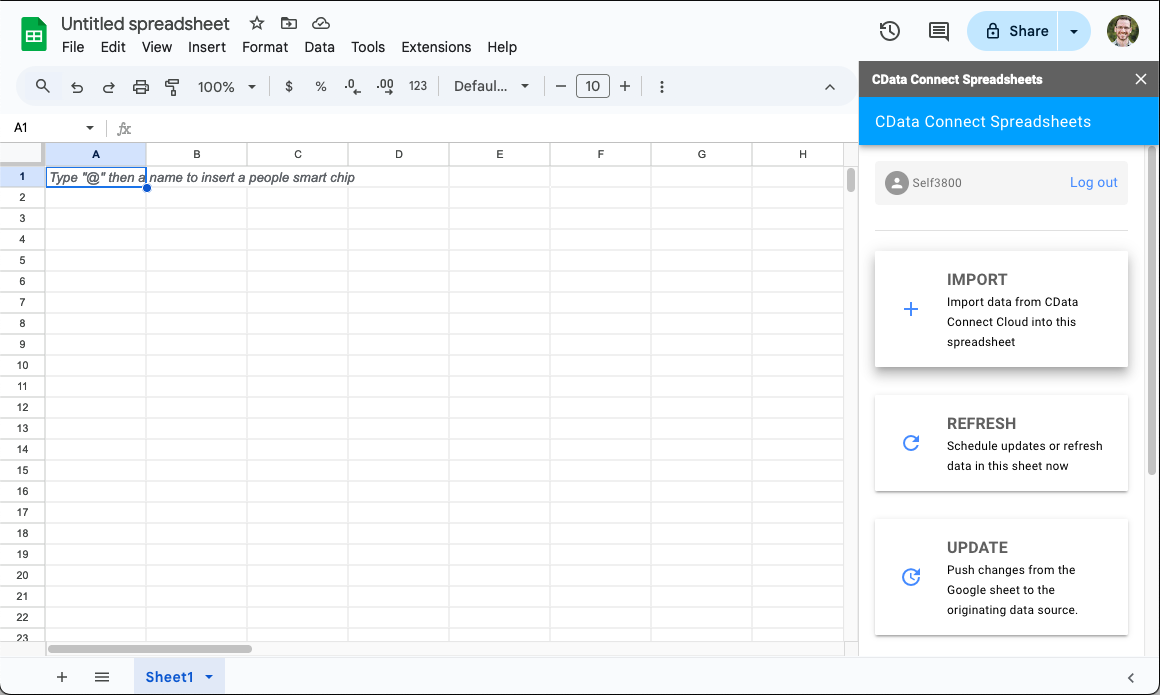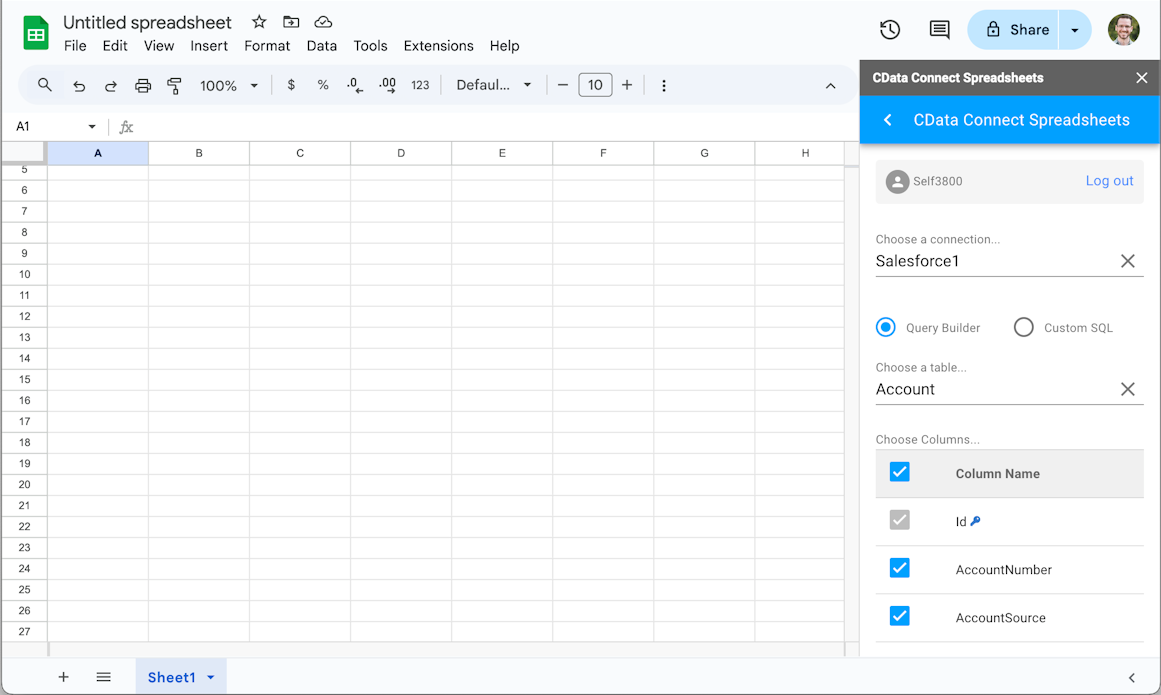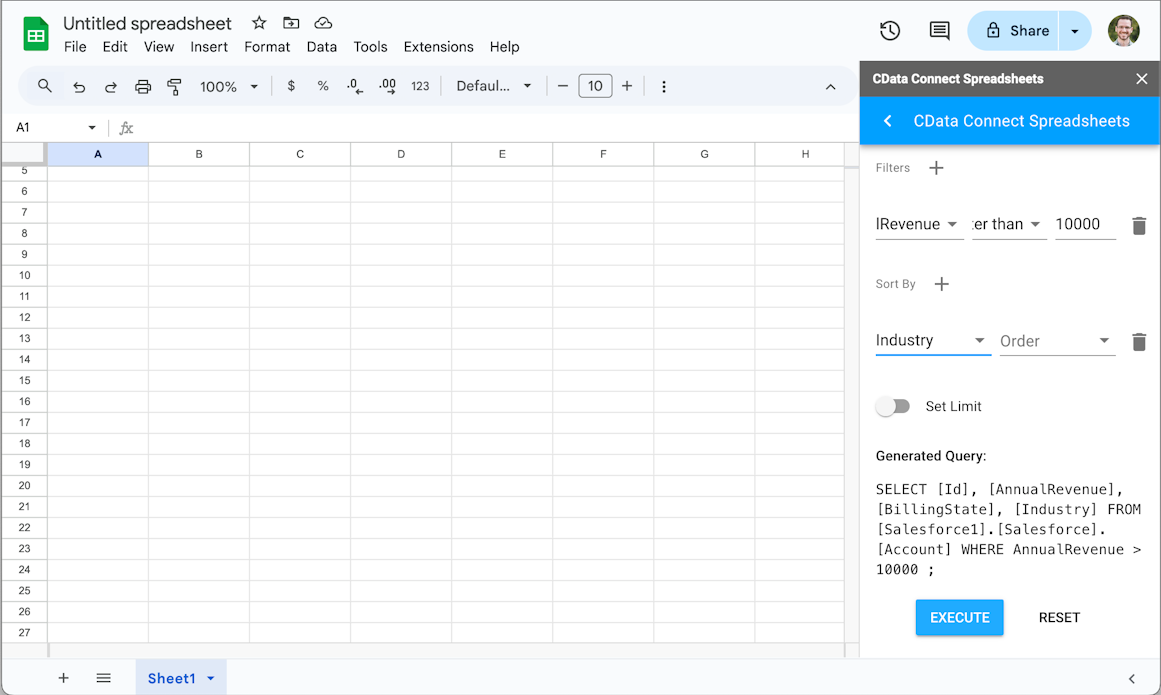Discover how a bimodal integration strategy can address the major data management challenges facing your organization today.
Get the Report →Access Live AlloyDB Data in Google Sheets
Use Connect Spreadsheets by CData to gain access to live AlloyDB data from your Google Sheets.
Looking for Connect Cloud instructions?
Your Connect Cloud account includes Connect Spreadsheets, so you can use the instructions below. You can expect minor differences when referencing the Connect Spreadsheet platform, but the principles still apply!
Google Sheets is a web-based spreadsheet program provided by Google. When integrated with Connect Spreadsheets by CData, you can effortlessly gain access to AlloyDB data directly within Google Sheets for tasks such as data analysis, collaboration, calculations, and more. This article offers a comprehensive guide on connecting to AlloyDB within Connect Spreadsheets and accessing live AlloyDB data seamlessly within Google Sheets.
Connect Spreadsheets is the easiest way to get all your live data into Microsoft Excel and Google Sheets - no more downloading, wrangling, and uploading files again. Just connect to your data, select the dataset you'd like to see, and import it into your spreadsheet.
This setup requires a Connect Spreadsheets account and the Connect Spreadsheets Add-On for Google Sheets. To get started, sign up a free Connect Spreadsheets account and install the free Connect Spreadsheets Google Sheets Add-On.
Configure AlloyDB Connectivity for Google Sheets
Connectivity to AlloyDB from Google Sheets is made possible through Connect Spreadsheets. To work with AlloyDB data from Google Sheets, we start by creating and configuring a AlloyDB connection.
- Log into Connect Spreadsheets, click Connections and click Add Connection
![Adding a Connection]()
- Select "AlloyDB" from the Add Connection panel
![Selecting a data source]()
-
Enter the necessary authentication properties to connect to AlloyDB.
The following connection properties are usually required in order to connect to AlloyDB.
- Server: The host name or IP of the server hosting the AlloyDB database.
- User: The user which will be used to authenticate with the AlloyDB server.
- Password: The password which will be used to authenticate with the AlloyDB server.
You can also optionally set the following:
- Database: The database to connect to when connecting to the AlloyDB Server. If this is not set, the user's default database will be used.
- Port: The port of the server hosting the AlloyDB database. This property is set to 5432 by default.
Authenticating with Standard Authentication
Standard authentication (using the user/password combination supplied earlier) is the default form of authentication.
No further action is required to leverage Standard Authentication to connect.
Authenticating with pg_hba.conf Auth Schemes
There are additional methods of authentication available which must be enabled in the pg_hba.conf file on the AlloyDB server.
Find instructions about authentication setup on the AlloyDB Server here.
Authenticating with MD5 Authentication
This authentication method must be enabled by setting the auth-method in the pg_hba.conf file to md5.
Authenticating with SASL Authentication
This authentication method must be enabled by setting the auth-method in the pg_hba.conf file to scram-sha-256.
Authenticating with Kerberos
The authentication with Kerberos is initiated by AlloyDB Server when the ∏ is trying to connect to it. You should set up Kerberos on the AlloyDB Server to activate this authentication method. Once you have Kerberos authentication set up on the AlloyDB Server, see the Kerberos section of the help documentation for details on how to authenticate with Kerberos.
![Configuring a connection (OData is shown)]()
- Click Create & Test
With the connection configured, you are ready to connect to AlloyDB data from Google Sheets.
Access Live AlloyDB Data from Google Sheets
The steps below outline connecting to Connect Spreadsheets from Google Sheets to access live AlloyDB data.
- Log into Google Sheets, create a new sheet (or open an existing one).
- Click Add-ons and click Get Add-ons (if you have already installed the Add-on, jump to step 5).
- Search for Connect Spreadsheets Add-On and install the Add-on.
![Install the Add-On]()
- Authorize the Add-On.
![Authorize the Add-On]()
- Back in Google Sheets, click Add-ons and open the Connect Spreadsheets Add-On.
![Opening the Add-On]()
- In the Add-On panel, click "Log in" to sign into and authenticate with your Connect Spreadsheets account
![Authenticating with Connect Spreadsheets]()
- In the Connect Spreadsheets panel in Google Sheets, click Import
![Connect Spreadsheets panel in Google Sheets]()
- Choose a Connection (e.g. AlloyDB1), Table (e.g. Orders, and Columns to import
![Cheesing a Connection, Table, and Columns]()
- Optionally add Filters, Sorting, and a Limit
![Filters, Sorting, Limits]()
- Click Execute to import the data and opt to overwrite the existing sheet or create a new one.
![Opting where to import the data]()
Live Access to AlloyDB Data from Cloud Applications
New, you have a direct, cloud-to-cloud connection to live AlloyDB data from your Google Sheets workbook. You can add more data to your workbook for calculations, aggregations, collaboration, and more.
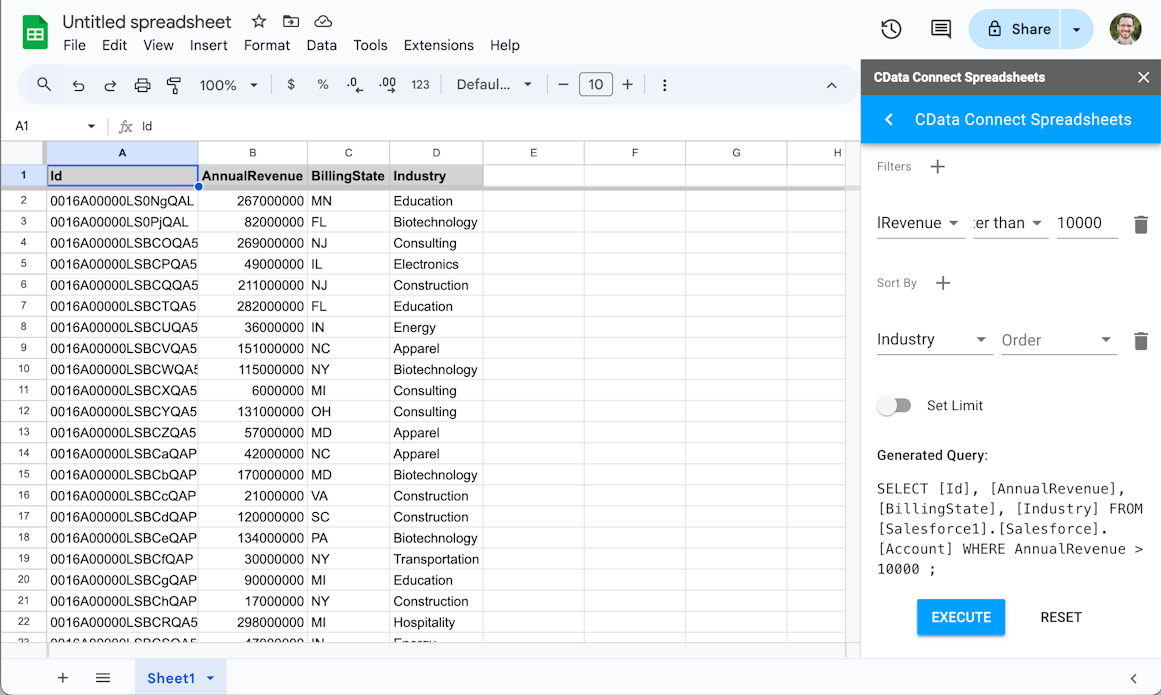
Try Connect Spreadsheets and get real-time data access to 100+ SaaS, Big Data, and NoSQL sources directly from your cloud applications.





